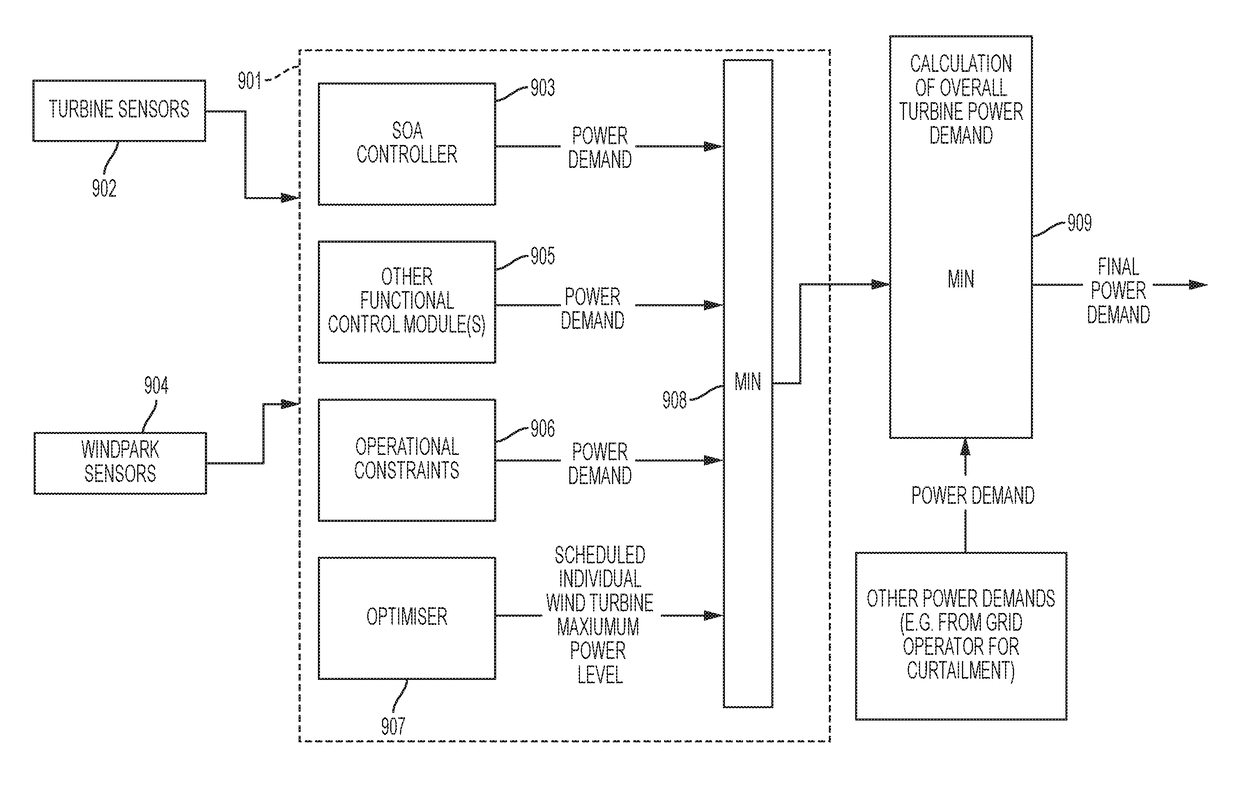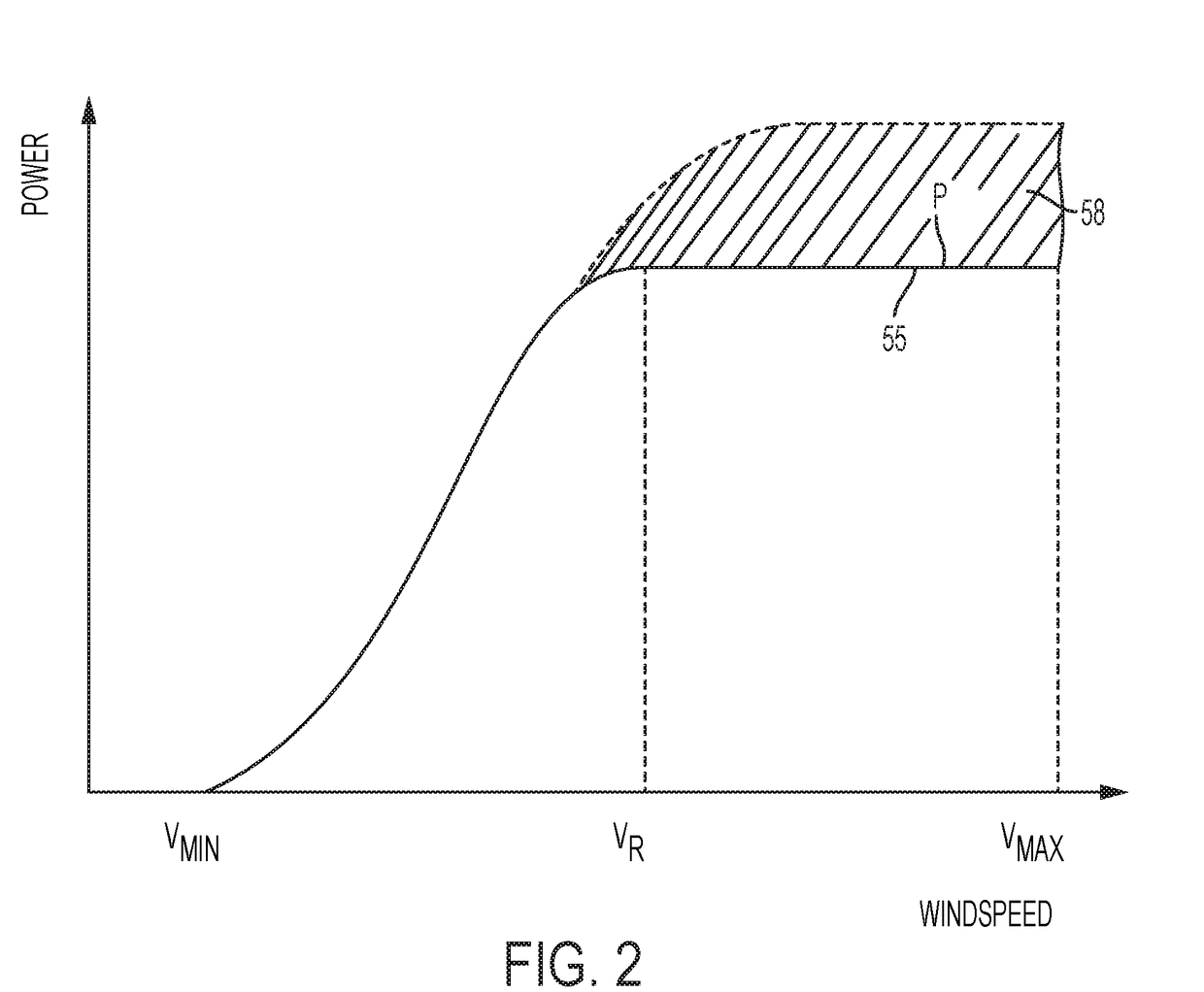Methods and systems for generating wind turbine control schedules
a technology of control schedule and wind turbine, applied in the direction of active/predictive/anticipative control, motors, motor life prolonging, etc., can solve the problems of fatigue damage, affecting the accumulation rate of damage, and the rate of wear or accumulation of damage is many times higher
- Summary
- Abstract
- Description
- Claims
- Application Information
AI Technical Summary
Benefits of technology
Problems solved by technology
Method used
Image
Examples
first example
[0201]According to a first example, a control schedule is produced that can be used to control a wind turbine. A relative schedule may be defined, and one or more of a minimum wind turbine life or a maximum number of major component replacements may be defined. The schedule is then adjusted to ensure that the fatigue lifetime of the turbine meets the target lifetime whilst maximising AEP.
[0202]A wind turbine is operated according to one of the over-rating control techniques described herein using an over-rating controller, which may be implemented by the wind turbine controller.
[0203]Lifetime Usage Estimators (LUEs) may be used to determine and monitor the lifetime usage of components. Lifetime Usage Estimators may be used in ensuring the fatigue load limits of all turbine components remain within their design lifetimes. The loads a given component experiences (be they bending moments, temperatures, forces or motions for example) may be measured and the amount of component fatigue l...
second example
[0216]A second example is provided for carrying out a more general optimisation process, which may be used to carry out similar sorts of optimisation to that described above, as well as other more general optimisations. The optimisation process of the second example may be carried out by a controller applying an optimisation scheme.
[0217]A full financial cost, or levelised cost of energy (LCoE), model of the turbine is included, and used either in off-line calculations prior to installation of an over-rating control system, or used online as part of the wind turbine controller or wind power plant controller. Use of the LCoE model allows optimisation of the over-rating strategy and may also factor in replacement of main components based upon the cost of doing so. As used herein, the term “Levelised Cost of Energy” refers to a measure of the cost of energy from a turbine that is calculated by dividing the lifetime costs of the turbine by the lifetime energy output of the turbine.
[0218...
PUM
 Login to View More
Login to View More Abstract
Description
Claims
Application Information
 Login to View More
Login to View More - R&D
- Intellectual Property
- Life Sciences
- Materials
- Tech Scout
- Unparalleled Data Quality
- Higher Quality Content
- 60% Fewer Hallucinations
Browse by: Latest US Patents, China's latest patents, Technical Efficacy Thesaurus, Application Domain, Technology Topic, Popular Technical Reports.
© 2025 PatSnap. All rights reserved.Legal|Privacy policy|Modern Slavery Act Transparency Statement|Sitemap|About US| Contact US: help@patsnap.com



